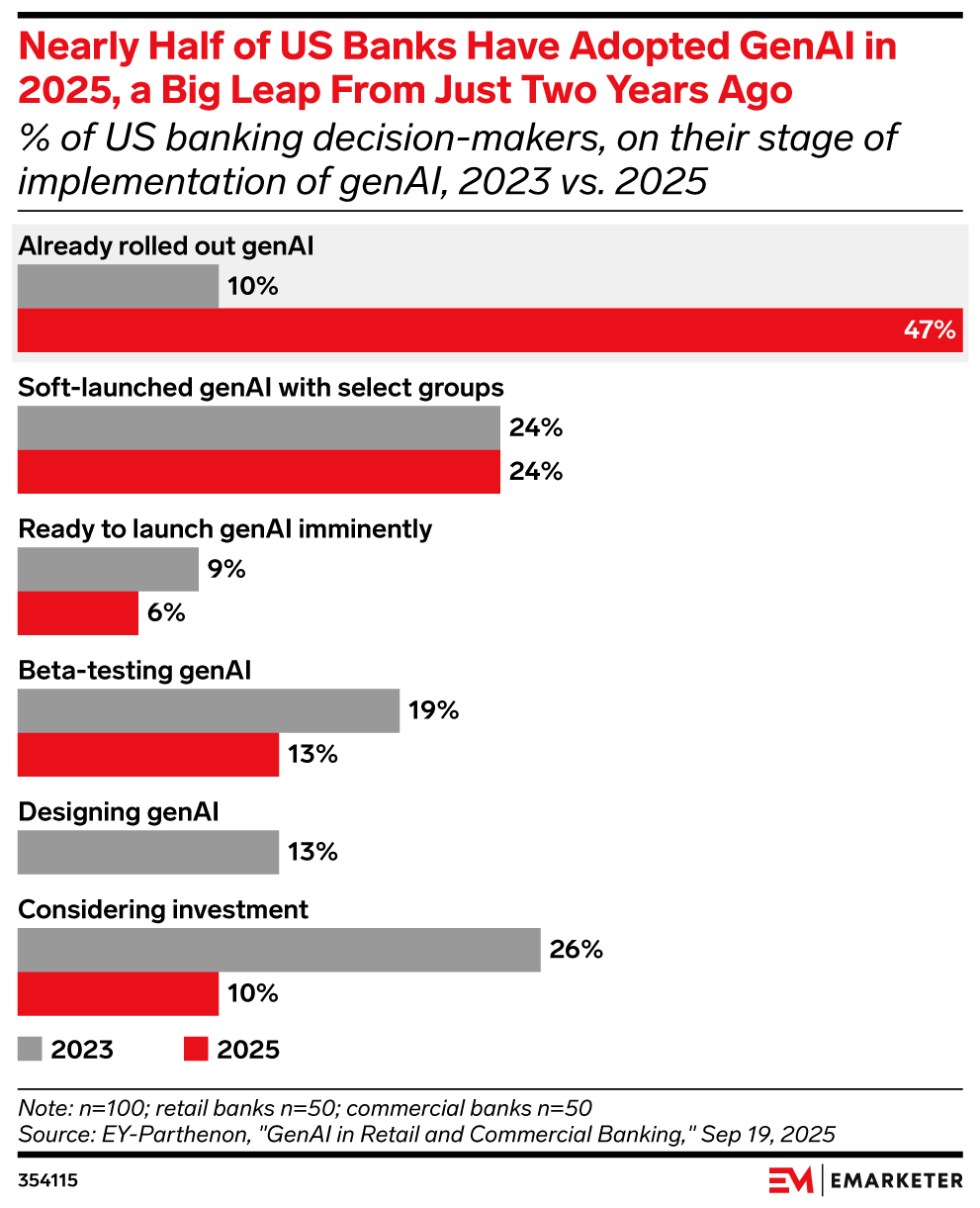Introduction
Inflammatory Bowel Disease (IBD) is a chronic, relapsing condition that primarily includes Crohn’s disease (CD) and ulcerative colitis (UC).1 IBD most commonly affects young adults, with peak incidence between the ages of 15 and 30 years, and a smaller peak occurring in later adulthood.2,3 These diseases are characterized by inflammation of the gastrointestinal tract, leading to significant morbidity and disability.4 Symptoms such as abdominal pain, diarrhea, and weight loss can severely impact quality of life and result in substantial healthcare costs. Globally, the economic burden of IBD is substantial, with significant implications for healthcare systems worldwide.5–9 In the United States alone, IBD affects over 3 million individuals and is a leading cause of death and disability among digestive diseases.10 Despite a decrease in prevalence from 1990 to 2019, the mortality rate for IBD in the US increased by 172%, and Disability Adjusted Life Years (DALYs) rose by 16%, indicating a growing burden on the healthcare system.10 The economic impact of IBD is multifaceted, involving direct costs such as hospitalizations, medications, and outpatient care, as well as indirect costs related to lost productivity and long-term disability.
Compared with traditional therapies such as corticosteroids, aminosalicylates, and immunomodulators, which mainly provide nonspecific immunosuppression or symptomatic relief, biologic therapies offer targeted modulation of key inflammatory pathways.4 With the advent of biologic therapies, there has been a substantial improvement in the management of IBD.11,12 Biologics, such as anti-tumor necrosis factor (TNF) agents, have revolutionized the treatment landscape by providing effective control of inflammation and reducing the need for surgery. These therapies have enabled many patients to achieve and maintain remission, significantly improving their quality of life and long-term outcomes.
However, treating IBD in women of reproductive age presents unique challenges. The safety of biologic therapies during pregnancy and breastfeeding is a critical concern that requires careful consideration and management.13–15 Evidence indicates that maintaining remission is crucial, as uncontrolled IBD itself increases risks of preterm birth and low birth weight. Anti-TNF agents and newer IL-23 inhibitors are generally considered safe, while discontinuation during pregnancy raises relapse risk.13 Surgical history also matters, since procedures such as ileal pouch–anal anastomosis (IPAA) can reduce fertility.15 In addition, women with IBD have higher rates of cesarean section and adverse maternal outcomes compared with women without IBD.15
Moreover, IBD can profoundly impact the psychological well-being of women in this age group, who often face additional stress due to their roles in family and work.16 The burden of IBD may significantly affect their social roles and overall quality of life.17,18 Therefore, understanding the epidemiology of IBD specifically in women of reproductive age is essential for developing targeted interventions and support mechanisms. In particular, by disaggregating the reproductive-age population into seven 5-year age bands and applying the Nordpred model for age-specific projections, this study offers novel insights beyond prior GBD-based analyses.
Methods
Data Source
This study utilizes data from the 2021 Global Burden of Disease (GBD) study, which provides comprehensive estimates on the incidence, prevalence, years lived with disability (YLDs), DALYs, and healthy life expectancy (HALE) for 371 diseases and injuries across 204 countries and territories, encompassing 811 subnational regions.19,20 Specifically, our research examines the burden of IBD among women of reproductive age from 1992 to 2021. The age groups included in this study are: 15–19, 20–24, 25–29, 30–34, 35–39, 40–44, and 45–49 years. Data collected includes the number of cases, incidence rates, mortality rates, and DALY rates. This research adheres to the Strengthening the Reporting of Observational Studies in Epidemiology (STROBE) guidelines for reporting observational epidemiological studies.
Socio-Demographic Index (SDI)
Developed by GBD researchers, the SDI is a composite indicator of development status that is strongly correlated with health outcomes. The SDI is the geometric mean of three key indices, each ranging from 0 to 1: the total fertility rate under the age of 25 (TFU25), the mean education level for individuals aged 15 and older (EDU15+), and the lag-distributed income (LDI) per capita. A location with an SDI of 0 represents a theoretical minimum level of development relevant to health, while an SDI of 1 represents a theoretical maximum level. In this study, we used SDI to stratify countries and regions into five categories (low, low-middle, middle, high-middle, and high) to analyze the burden of IBD among women of reproductive age. This stratification helps to understand how socio-demographic factors influence the incidence, prevalence, mortality, and DALYs associated with IBD in different development settings.
Statistical Analysis
We conducted a comprehensive statistical analysis to assess the burden of IBD among women of reproductive age from 1992 to 2021. Incidence rates, mortality rates, and DALYs rates were calculated per 100,000 population for each year and age group (15–19, 20–24, 25–29, 30–34, 35–39, 40–44, and 45–49 years). The 95% uncertainty intervals (UIs) for these estimates were derived from 1000 bootstrap replications to account for variability and ensure robustness.19
To evaluate trends over time, we computed the estimated annual percentage change (EAPC) for incidence rates, mortality rates, and DALYs rates using joinpoint regression analysis. We investigated the relationship between socio-demographic factors and the burden of IBD by stratifying data according to the SDI. To explore non-linear associations between SDI and IBD outcomes, we used loess smoothing. Additionally, Spearman’s rank correlation was applied to examine linear trends and the impact of different SDI levels on the burden of IBD.21 In our predictive analysis, we employed the Nordpred model, which utilizes age-period-cohort analysis to forecast future disease trends. This method provides a structured framework for estimating future health scenarios based on historical data and demographic dynamics.22 Our analysis was conducted on a global scale, with a specific focus on forecasting IBD trends across different age groups of women of reproductive age. This approach allows us to capture both the overall global burden and the specific impacts within this critical demographic. All analyses were done in R 4.3.3 with packages: ggplot2, sf, segmented, broom, dplyr, tidyr, INLA, BAPC.
Results
Inflammatory Bowel Disease in Women of Reproductive: Global Trends
Incidence
In 2021, the global incidence of IBD among women of reproductive age was 98,974.56 cases (95% UI: 80,567.63–124,088.76). This represents a 55.04% increase from the 63,839.03 cases (95% UI: 52,841.67–78,582.08) reported in 1992. The incidence rate increased from 4.61 per 100,000 population (95% UI: 3.82–5.68) in 1992 to 5.08 per 100,000 population (95% UI: 4.13–6.37) in 2021, with an EAPC of 0.43 (95% CI: 0.28–0.58) (Table 1). In 2021, the highest incidence rate was observed in the age group of 45–49 years, with a rate of 8.11 per 100,000 population, whereas the lowest incidence rate was found in the 15–19 years age group, with a rate of 1.40 per 100,000 population (Figure 1). Between 1992 and 2021, the age group 40–44 years experienced the most significant change in incidence rates, with an increase of 0.53 per 100,000 population. Conversely, the 25–29 years age group had the smallest change, with an increase of only 0.05 per 100,000 population (Figure 2).
|
Table 1 Incidence of Inflammatory Bowel Disease Among Women of Reproductive Age at the Global and Regional Levels Between 1992 and 2021
|
 |
Figure 1 Incidence, Death, and DALYs Numbers and Rates of Inflammatory Bowel Disease Among Women of Reproductive Age in 2021. (A) Number and rate of incidence; (B) Number and rate of death; (C) Number and rate of DALYs.
|
 |
Figure 2 Trends in Inflammatory Bowel Disease Incidence, Death, and DALYs rates among women of reproductive age from 1992 to 2021. (A) Rate of incidence; (B) Rate of death; (C) Rate of DALYs.
|
Mortality
In 2021, the global number of deaths due to IBD among women of reproductive age was 2,586.76 (95% UI: 1,900.32–3,125.77). This represents a 40.83% increase from the 1,836.75 deaths (95% UI: 1,195.53–2,384.65) reported in 1992. The death rate remained relatively stable, with 0.13 deaths per 100,000 population (95% UI: 0.09–0.17) in 1992 and 0.13 deaths per 100,000 population (95% UI: 0.10–0.16) in 2021, with an EAPC of −0.07 (95% CI: −0.12 to −0.01) (Supplement Table 1). In 2021, the highest death rate was observed in the age group of 40–44 years, with a rate of 0.22 per 100,000 population, whereas the lowest death rate was found in the 15–19 years age group, with a rate of 0.03 per 100,000 population (Figure 1). Between 1992 and 2021, the age group 45–49 years experienced the most significant decrease in death rates, with a reduction of 0.08 per 100,000 population. Conversely, the 30–34 years age group had the smallest decrease, with a reduction of only 0.002 per 100,000 population (Figure 2).
DALYs
In 2021, the global number of DALYs due to IBD among women of reproductive age was 281,580.36 (95% UI: 223,989.19–349,965.81). This represents a 38.53% increase from the 203,259.52 DALYs (95% UI: 154,006.13–257,799.02) reported in 1992. The DALYs rate slightly decreased from 14.68 per 100,000 population (95% UI: 11.12–18.62) in 1992 to 14.45 per 100,000 population (95% UI: 11.49–17.96) in 2021 (Supplement Table 2). In 2021, the highest DALYs rate was observed in the age group of 40–44 years, with a rate of 23.38 per 100,000 population, whereas the lowest DALYs rate was found in the 15–19 years age group, with a rate of 3.19 per 100,000 population (Figure 1). Between 1992 and 2021, the age group 45–49 years experienced the most significant decrease in DALYs rates, with a reduction of 5.22 per 100,000 population. Conversely, the 25–29 years age group had the smallest change, with a decrease of only 0.001 per 100,000 population (Figure 2).
Inflammatory Bowel Disease in Women of Reproductive: Socio-Demographic Index Levels
Incidence
In 2021, the number of prevalent cases of IBD among women of reproductive age was highest in the High SDI region, with a total of 38,912.17 cases (95% UI: 32,056.09–47,182.84). The High SDI region also had the highest prevalence rate, at 16.00 per 100,000 population (95% UI: 13.18–19.40). The most significant increase in the number of cases from 1992 to 2021 was observed in the Middle SDI region, with an absolute increase of 9,764.68 cases. The Middle SDI region also exhibited the highest EAPC, with a value of 2.07 (95% CI: 1.81–2.33) (Table 1).
Mortality
From 1992 to 2021, the regions that experienced a decline in mortality rates for IBD among women of reproductive age, as indicated by the EAPC, included the High-middle SDI region with an EAPC of −1.64 (95% CI: −1.83 to −1.45), the Low-middle SDI region with an EAPC of −0.35 (95% CI: −0.42 to −0.28), and the Middle SDI region with an EAPC of −0.47 (95% CI: −0.60 to −0.34). In contrast, the High SDI region saw an increase in mortality rates, with an EAPC of 0.41 (95% CI: 0.06 to 0.75), as did the Low SDI region, with an EAPC of 0.13 (95% CI: 0.05 to 0.21). In 2021, the highest mortality rate was observed in the Low SDI region, at 0.27 per 100,000 population (95% UI: 0.16–0.36), whereas the lowest mortality rate was found in the High-middle SDI region, at 0.07 per 100,000 population (95% UI: 0.06–0.09) (Supplement Table 1).
DALYs
From 1992 to 2021, the EAPC analysis revealed that the Middle SDI region experienced the most significant increase in DALYs, with an EAPC of 0.39 (95% CI: 0.31–0.47). Conversely, the High-middle SDI region saw the most substantial decrease in EAPC, registering −0.39 (95% CI: −0.47 to −0.32). In 2021, the High SDI region exhibited the highest DALYs value for women of reproductive age (15–49 years) with IBD, reaching 75,867.33 (95% UI: 53,581.20–102,607.88). In contrast, the High-middle SDI region had the lowest DALYs value in 2021, recorded at 31,075.70 (95% UI: 23,755.44–40,083.38) (Supplement Table 2).
Inflammatory Bowel Disease in Women of Reproductive: Geographic Regional Trends
Incidence
In 2021, the highest number of incident cases of IBD among women of reproductive age was reported in High-income North America, with 19,864.53 cases (95% UI: 16,479.19–24,224.81). In contrast, Oceania had the fewest cases, with 30 cases (95% UI: 24–39). The region with the highest EAPC in incidence rates was East Asia, showing substantial growth over the period, with an EAPC of 3.40 (95% CI: 2.67–4.13). Oceania exhibited the lowest EAPC at 0.59 (95% CI: 0.55–0.62) (Table 1).
In 2021, the highest incidence rate was observed in High-income North America, with a rate of 23.64 per 100,000 population (95% UI: 19.61–28.83), while Oceania had the lowest incidence rate at 0.87 per 100,000 population (95% UI: 0.68–1.13). Among the 21 GBD regions, 8 regions had incidence rates above the global mean of 5.08 per 100,000 population (95% UI: 4.13–6.37), such as High-income North America, Southern Latin America, and Western Europe. In contrast, 13 regions, including Southeast Asia and East Asia, had incidence rates below the global mean (Table 1). Overall, a positive correlation is evident between SDI levels and IBD incidence rates, indicating that more developed regions experience higher rates of this disease (Figure 3).
 |
Figure 3 Association SDI and Rates of Incidence, Death, and DALYs for Inflammatory Bowel Disease Among Women of Reproductive Age Across 21 GBD Regions from 1992 to 2021. (A) Incidence rate. (B) Death rate. (C) DALYs rate.
|
Mortality
In 2021, the highest number of deaths due to IBD among women of reproductive age was reported in South Asia, with 544.17 deaths (95% UI: 348.04–934.81). Oceania reported the fewest deaths, with 0.59 cases (95% UI: 0.31–0.94). The highest EAPC in mortality rates was in Australasia, with an EAPC of 2.69 (95% CI: 1.67–3.73), while High-income Asia Pacific had the lowest EAPC at −3.48 (95% CI: −3.78 to −3.17) (Supplement Table 1).
The highest mortality rate in 2021 was in Central Sub-Saharan Africa, at 0.09 per 100,000 population (95% UI: 0.05–0.14), and the lowest was in High-income North America, at 0.20 per 100,000 population (95% CI: 0.19–0.21). Among the 21 GBD regions, 7 regions had mortality rates above the global mean of 0.13 per 100,000 population (95% UI: 0.10–0.16), including Western Sub-Saharan Africa and Eastern Europe, while 14 regions, such as Southeast Asia and Australasia, had rates below the global mean (Supplement Table 1). Overall, the data reveal a strong inverse relationship between SDI levels and IBD mortality rates, highlighting that less developed regions are more heavily burdened by mortality due to IBD (Figure 3).
DALYs
In 2021, the highest number of DALYs due to IBD among women of reproductive age was reported in South Asia, with 67,327.10 DALYs (95% UI: 48,638.08–92,097.98). Oceania reported the fewest DALYs, with 68.95 DALYs (95% UI: 48.66–94.67) (Supplement Table 2).
The highest EAPC in DALY rates was in Central Latin America, with an EAPC of 1.15 (95% CI: 0.98–1.32), while Andean Latin America had the lowest EAPC at −1.57 (95% CI: −1.87 to −1.26). Among the 21 GBD regions, 9 regions had DALY rates above the global mean of 14.45 per 100,000 population, including Western Sub-Saharan Africa and Australasia, while 12 regions, such as Southeast Asia and East Asia, had rates below the global mean (Supplement Table 2). The graph depicts a U-shaped curve, indicating that both low and high SDI regions have higher DALY rates due to IBD, while middle SDI regions have lower rates (Figure 3).
Inflammatory Bowel Disease in Women of Reproductive: National Trends
Incidence
In 2021, the highest number of incident cases of IBD among women of reproductive age was reported in India, with 22,540.84 cases (95% UI: 18,131.75–28,645.95). The country with the highest EAPC in incidence rates was China, with an EAPC of 3.45 (95% CI: 2.71–4.19). On the other hand, Finland had the lowest EAPC at −1.85 (95% CI: −2.28 to −1.42) (Supplement Table 3).
The incidence rates of IBD among women of reproductive age in 2021 demonstrate a positive correlation with the SDI across 204 countries. High SDI countries, such as the Netherlands (32.38 per 100,000 population), Germany (26.99 per 100,000 population), and Norway (25.76 per 100,000 population), show relatively high incidence rates. In contrast, low SDI countries, such as the Lao People’s Democratic Republic (0.82 per 100,000 population) and Cambodia (0.83 per 100,000 population), exhibit significantly lower incidence rates. Middle SDI countries, including Kazakhstan (6.63 per 100,000 population) and the Kyrgyz Republic (5.28 per 100,000 population), present moderate incidence rates (Supplement Table 3). This pattern indicates that higher levels of socioeconomic development are associated with increased incidence rates of IBD (Figure 4).
 |
Figure 4 Continued.
|
 |
Figure 4 Relationship Between SDI and Rates of Incidence, Death, and DALYs for Inflammatory Bowel Disease Among Women of Reproductive Age in 204 Countries and Territories in 2021. (A) Incidence rates. (B) Death rates. (C) DALYs rates.
|
Mortality
In 2021, the highest number of deaths due to IBD among women of reproductive age was reported in India, with 357.21 deaths (95% UI: 203.56–652.99). The country with the highest EAPC in mortality rates was American Samoa, with an EAPC of 4.02 (95% CI: 2.84–5.22). Conversely, Singapore had the lowest EAPC at −8.05 (95% CI: −8.50 to −7.60) (Supplement Table 4).
The mortality rates due to IBD across countries in 2021 illustrate an inverse relationship with SDI levels. High SDI countries, such as Canada (0.13 per 100,000 population) and Australia (0.10 per 100,000 population), report relatively low mortality rates. In contrast, low SDI countries, such as Nigeria (0.56 per 100,000 population) and Ghana (0.71 per 100,000 population), experience significantly higher mortality rates. Middle SDI countries, including Kazakhstan (0.27 per 100,000 population) and Brazil (0.23 per 100,000 population), display moderate mortality rates (Supplement Table 4). This pattern highlights how socioeconomic development influences IBD mortality rates, with more developed regions achieving lower rates (Figure 4).
DALYs
In 2021, the highest number of DALYs due to IBD among women of reproductive age was reported in India, with 48,130.70 DALYs (95% UI: 34,218.65–67,011.34). The highest DALY rate was observed in Guinea-Bissau, with a rate of 87.33 per 100,000 population (95% UI: 47.06–141.34), while the lowest DALY rate was in the Solomon Islands, at 1.72 per 100,000 population (95% UI: 1.18–2.37). The country with the highest EAPC in DALY rates was Libya, with an EAPC of 2.67 (95% CI: 2.42–2.93). Conversely, Estonia had the lowest EAPC at −2.64 (95% CI: −3.66 to −1.60) (Supplement Table 5).
The DALY rates due to IBD across countries in 2021 demonstrate a U-shaped pattern when examined in relation to SDI levels (Figure 4). High SDI countries, such as Canada (76.20 per 100,000 population) and the United States (38.67 per 100,000 population), exhibit relatively elevated DALY rates. Similarly, low SDI countries, such as Nigeria (34.37 per 100,000 population) and Ghana (43.54 per 100,000 population), also report elevated DALY rates. In contrast, middle SDI countries, including Kazakhstan (24.27 per 100,000 population), Brazil (16.14 per 100,000 population), and Turkey (12.01 per 100,000 population), display moderate DALY rates (Supplement Table 5).
Inflammatory Bowel Disease in Women of Reproductive Age: Projected Global Trends (2021–2030)
From 2021 to 2030, the global burden of IBD among women of reproductive age is projected to decline gradually. In 2021, the number of IBD cases was estimated at 98,975, with an incidence rate of 5.08 per 100,000. By 2030, this number is expected to decrease to 94,773, with a corresponding incidence rate of 4.51 per 100,000. Despite this decrease, the number of deaths attributable to IBD is anticipated to rise slightly, from 2587 in 2021 to 2781 in 2030, while the mortality rate will remain stable at around 0.132 per 100,000. The DALYs associated with IBD are expected to increase slightly from 281,580 years in 2021 to 284,508 years in 2030, with the DALY rate changing from 14.45 per 100,000 in 2021 to 13.55 per 100,000 in 2030 (Supplement Table 6).
Age-specific trends reveal that the incidence of IBD increases progressively with age, peaking in the 45 to 49 age group by 2030, where the number of cases is projected to reach 21,213, with an incidence rate of 7.79 per 100,000. The incidence remains high in the 40 to 44 age group as well, with 20,736 cases and an incidence rate of 6.96 per 100,000. Correspondingly, the death rate is expected to escalate from 0.03 per 100,000 in the 15 to 19 age group to 0.21 per 100,000 in the 45 to 49 age group, with the 40 to 44 age group seeing a similar rate of 0.22 per 100,000. The DALYs rate will similarly rise with age, starting at 2.95 per 100,000 in the youngest group (15–19 years) and peaking at 21.42 per 100,000 in the 45 to 49 age group, closely followed by 21.18 per 100,000 in the 40 to 44 age group. These trends underscore the increasing burden of IBD with advancing age, particularly in the older reproductive age groups (Figure 5).
 |
Figure 5 Global trends and projections of incidence, Death, and DALYs of inflammatory bowel disease among women of reproductive age (1992–2030). (A) Number and rate of incidence; (B) Number and rate of death; (C) Number and rate of DALYs.
|
Discussion
The burden of IBD has been increasing steadily, presenting a significant public health challenge,5,7 particularly among women of reproductive age.23 This demographic is unique due to the intersection of their reproductive health and the management complexities of IBD.24 Our study conducted a comprehensive analysis of the global, regional, and national burden of IBD from 1992 to 2021, focusing on incidence, mortality, and DALYs. We further explored how these indicators varied across different regions and countries according to their SDI levels. This study provides crucial epidemiological evidence necessary for developing targeted public health strategies and interventions aimed at mitigating the impact of IBD on women of reproductive age, ultimately improving their quality of life and health outcomes.
Globally, the incidence, mortality, and DALYs associated with IBD among women of reproductive age have shown significant trends from 1992 to 2021. The incidence of IBD increased by 55.04%, from 63,839.03 cases in 1992 to 98,974.56 cases in 2021, with the incidence rate rising from 4.61 to 5.08 per 100,000 population. The highest incidence rate in 2021 was observed in women aged 45–49 years, whereas the lowest was in those aged 15–19 years. This suggests that older women within the reproductive age spectrum are more frequently diagnosed with IBD. As women age, the decline in immune regulation and significant alterations in gut microbiota may synergistically contribute to the increased risk and higher incidence of IBD.25,26
Despite the increase in incidence, the overall mortality rate remained relatively stable, staying at around 0.13 deaths per 100,000 population. The highest mortality rate was observed in the 40–44 years age group, reaching 0.22 deaths per 100,000 population. However, DALYs increased by 38.53%, indicating a growing burden of disability. The age group of 45–49 years experienced the most significant increase in DALYs, highlighting the prolonged impact of IBD on older women within the reproductive age. This could be due to the chronic nature of the disease and its complications, including frequent relapses, long-term medication requirements, and surgeries, all of which impact quality of life.27–29 Public health interventions must address these growing burdens to improve outcomes and quality of life for this vulnerable population.
The burden of IBD among women of reproductive age varies significantly across different socioeconomic contexts, as illustrated by the SDI. In regions with higher SDI, such as North America, Western Europe, and Australia, the incidence of IBD is markedly elevated. For instance, in economically developed regions like North America, IBD stands as a leading cause of disability and mortality among digestive diseases. This substantial disease burden necessitates robust healthcare interventions. Contributing to this higher incidence is the heightened awareness and availability of advanced diagnostic tools in these regions, including endoscopy, fecal calprotectin, and gastrointestinal ultrasound, which enhance IBD detection.30,31 These diagnostic tools, combined with a high index of suspicion in primary care settings, facilitate earlier and more frequent diagnoses, potentially inflating incidence rates compared to regions with less developed healthcare infrastructures. Furthermore, these regions benefit from early detection, comprehensive management protocols, and greater access to advanced therapies, which together contribute to lower mortality rates, despite the higher prevalence of the disease.
Beyond diagnostic advances, therapeutic innovations—particularly the introduction of biologics since the late 1990s—have substantially improved the prognosis of IBD.32 Infliximab was first approved for Crohn’s disease in 1998 and subsequently for ulcerative colitis, with newer biologics such as IL-12/23 and IL-23 inhibitors further broadening treatment options.33 Evidence from clinical trials and population-based studies indicates that biologics reduce hospitalization, surgery, and mortality, while improving quality-adjusted life years (QALYs).34 These advances may help explain the stabilization or decline in mortality despite rising incidence, particularly in high-SDI regions where access to biologics is greater. Although GBD data cannot directly capture treatment effects, acknowledging these developments provides important context for interpreting observed trends and emphasizes the need for equitable access in reproductive-age women.
In contrast, lower SDI regions, such as Western Sub-Saharan Africa, exhibit lower incidence rates but face disproportionately higher mortality and DALY rates. This disparity is largely driven by inadequate healthcare infrastructure, limited access to advanced therapies, and delays in diagnosis, which exacerbate the disease burden.34–36 Middle SDI regions, including Central Asia and Latin America, are currently navigating a transitional phase characterized by improvements in healthcare systems that have begun to enhance disease identification and management. Despite these advancements, these regions continue to face significant challenges in managing the chronic and debilitating nature of IBD, as reflected by the substantial increase in DALYs. This growing burden is compounded by the rapid urbanization and westernization in these areas, which contribute to a rising incidence of IBD.8 Addressing these disparities is essential for improving health outcomes and the quality of life for women of reproductive age affected by IBD, particularly as these regions confront the dual challenges of increasing prevalence and an aging population.
Finally, the projected trends in the global burden of IBD among women of reproductive age from 2021 to 2030 indicate important shifts across different age groups. While the overall incidence rate is projected to decrease slightly, the total number of cases remains substantial, particularly in the older segment of this age range. The mortality rate is expected to remain stable, yet an increase in the number of deaths is anticipated, reflecting population growth within this demographic. Additionally, a slight increase in DALYs is expected, especially among those aged 40–49, underscoring the ongoing challenge posed by the chronic nature of IBD. These projections highlight the necessity for targeted public health interventions, focusing on early diagnosis, effective disease management, and comprehensive support, to alleviate the long-term impact of IBD on this population.
Limitations
This study has several limitations. First, the reliance on GBD 2021 data, which incorporates modeled estimates, may introduce inaccuracies, particularly in low-income regions where data quality is less reliable. This could lead to an underestimation of the true burden of IBD in these areas. Additionally, the projections for IBD burden are based on historical trends and do not consider potential future interventions or policy changes that could alter these trends. Furthermore, the study was unable to analyze specific risk factors for IBD due to the limitations of the database used, which could have provided more insights for targeted interventions. Finally, ecological and environmental factors such as latitude, UV exposure, and vitamin D—known to be associated with IBD epidemiology—could not be assessed, as these indices are not included in the GBD 2021 dataset.
Conclusion
In conclusion, the global burden of IBD among women of reproductive age has significantly increased from 1992 to 2021, with the total number of cases rising by 55% and incidence rates showing a steady upward trend. This growth highlights the ongoing challenges posed by IBD on a global scale. Substantial variations are evident across different SDI regions. High SDI regions, while experiencing higher incidence rates and DALYs, have relatively lower mortality rates. In contrast, low SDI regions face a disproportionate burden, with higher mortality and DALYs despite lower incidence rates. Looking forward, projections to 2030 suggest a slight decrease in global incidence rates; however, the absolute number of cases and related deaths is expected to continue increasing, particularly among older women within the reproductive age range. These findings emphasize the urgent need for targeted public health interventions that focus on early diagnosis, effective management strategies, and comprehensive support systems, particularly in resource-limited settings.
Abbreviation
IBD, Inflammatory Bowel Disease; GBD, Global Burden of Disease; DALYs, Disability-Adjusted Life Years; EAPC, Estimated Annual Percentage Change; SDI, Socio-Demographic Index; CD, Crohn’s disease; UC, Ulcerative Colitis; TNF, Tumor Necrosis Factor; YLDs, Years Lived with Disability; HALE, Healthy Life Expectancy.
Data Sharing Statement
The data can be obtained from a public, open-access database. Information regarding data access policies and procedures can be found at https://ghdx.healthdata.org/gbd-2021.
Ethics Approval and Consent to Participate
This study used only de-identified, publicly available data from the Global Burden of Disease (GBD) 2021 database. The Ethics Committee of Xiangyang No.1 People’s Hospital determined that formal approval was not required.
Acknowledgments
We would like to express our heartfelt appreciation to the Global Burden of Disease Collaborative Network and the Institute for Health Metrics and Evaluation (IHME) for their invaluable support. We sincerely thank the editor and reviewers for their valuable feedback, which has greatly improved the quality of our manuscript.
Author Contributions
All authors made a significant contribution to the work reported, whether in the conception, study design, execution, acquisition of data, analysis and interpretation, or in all these areas; took part in drafting, revising, or critically reviewing the article; gave final approval of the version to be published; agreed on the journal to which the article has been submitted; and agree to be accountable for all aspects of the work.
Funding
No external funding was received for the study.
Disclosure
The authors declare that they have no competing interests in this work.
References
1. Podolsky DK. Inflammatory bowel disease. N Engl J Med. 2002;347:417–429. doi:10.1056/NEJMra020831
2. Johnston RD, Logan RF. What is the peak age for onset of IBD? Inflamm Bowel Dis. 2008;14(Suppl 2):S4–5. doi:10.1002/ibd.20545
3. Zimmerman J, Gavish D, Rachmilewitz D. Early and late onset ulcerative colitis: distinct clinical features. J Clin Gastroenterol. 1985;7:492–498. doi:10.1097/00004836-198512000-00010
4. Baumgart DC, Sandborn WJ. Inflammatory bowel disease: clinical aspects and established and evolving therapies. Lancet. 2007;369:1641–1657. doi:10.1016/S0140-6736(07)60751-X
5. Park J, Jeong GH, Song M, et al. The global, regional, and national burden of inflammatory bowel diseases, 1990–2019: a systematic analysis for the global burden of disease study 2019. Dig Liver Dis. 2023;55:1352–1359. doi:10.1016/j.dld.2023.04.003
6. Zhang ZM, Lin ZL, He BX, et al. Epidemiological analysis reveals a surge in inflammatory bowel disease among children and adolescents: a global, regional, and national perspective from 1990 to 2019 – insights from the China study. J Glob Health. 2023;13:04174. doi:10.7189/jogh.13.04174
7. Alatab S, Sepanlou SG, Ikuta K. The global, regional, and national burden of inflammatory bowel disease in 195 countries and territories, 1990–2017: a systematic analysis for the global burden of disease study 2017. Lancet Gastroenterol Hepatol. 2020;5:17–30. doi:10.1016/S2468-1253(19)30333-4
8. Kaplan GG, Windsor JW. The four epidemiological stages in the global evolution of inflammatory bowel disease. Nat Rev Gastroenterol Hepatol. 2021;18:56–66. doi:10.1038/s41575-020-00360-x
9. Zhang Z, Du N, Xu C, Chen W, Chen T, Xiao Y. Global, regional, and national burden of inflammatory bowel disease in persons aged 60–89 years from 1992 to 2021. BMC Gastroenterol. 2025;25:425. doi:10.1186/s12876-025-04042-3
10. Rahul Patel VRSK, Roy V, Kunhipurayil S. Trends of inflammatory bowel disease burden in the United States (1990–2019), projections of deaths to 2040: insights from the 2019 global burden of disease study. Gastroenterology. 2024;166:S57. doi:10.1053/j.gastro.2023.11.137
11. Tursi A, Mocci G, Lorenzetti R, et al. Long-term real-life efficacy and safety of infliximab and Adalimumab in the treatment of inflammatory bowel diseases outpatients. Eur J Gastroenterol Hepatol. 2021;33:670–679. doi:10.1097/MEG.0000000000002087
12. Kamal ME, Werida RH, Radwan MA, et al. Efficacy and safety of infliximab and Adalimumab in inflammatory bowel disease patients. Inflammopharmacology. 2024;32(5):3259–3269. doi:10.1007/s10787-024-01508-w
13. Nielsen OH, Gubatan JM, Kolho KL, Streett SE, Maxwell C. Updates on the management of inflammatory bowel disease from periconception to pregnancy and lactation. Lancet. 2024;403:1291–1303. doi:10.1016/S0140-6736(24)00052-7
14. de Lima A, Zelinkova Z, van der Ent C, Steegers EA, van der Woude CJ. Tailored anti-TNF therapy during pregnancy in patients with IBD: maternal and fetal safety. Gut. 2016;65:1261–1268. doi:10.1136/gutjnl-2015-309321
15. Shand AW, Chen JS, Selby W, Solomon M, Roberts CL. Inflammatory bowel disease in pregnancy: a population-based study of prevalence and pregnancy outcomes. BJOG. 2016;123:1862–1870. doi:10.1111/1471-0528.13946
16. Truta B. The impact of inflammatory bowel disease on women’s lives. Curr Opin Gastroenterol. 2021;37:306–312. doi:10.1097/MOG.0000000000000736
17. Pittet V, Vaucher C, Froehlich F, Burnand B, Michetti P, Maillard MH. Patient self-reported concerns in inflammatory bowel diseases: a gender-specific subjective quality-of-life indicator. PLoS One. 2017;12:e0171864. doi:10.1371/journal.pone.0171864
18. Ronchetti C, Cirillo F, Di Segni N, Cristodoro M, Busnelli A, Levi-Setti PE. Inflammatory bowel disease and reproductive health: from fertility to pregnancy-A narrative review. Nutrients. 2022;15:14. doi:10.3390/nu15010014
19. Ferrari AJ, Santomauro DF, Aali A, et al. Global incidence, prevalence, years lived with disability (YLDs), disability-adjusted life-years (DALYs), and healthy life expectancy (HALE) for 371 diseases and injuries in 204 countries and territories and 811 subnational locations, 1990–2021: a systematic analysis for the global burden of disease study 2021. Lancet. 2024;403:2133–2161. doi:10.1016/S0140-6736(24)00757-8
20. Brauer M, Roth GA, Aravkin AY, et al. Global burden and strength of evidence for 88 risk factors in 204 countries and 811 subnational locations, 1990–2021: a systematic analysis for the global burden of disease study 2021. Lancet. 2024;403:2162–2203. doi:10.1016/S0140-6736(24)00933-4
21. Zhang K, Kan C, Han F, et al. Global, regional, and national epidemiology of diabetes in children from 1990 to 2019. JAMA Pediatrics. 2023;177:837. doi:10.1001/jamapediatrics.2023.2029
22. Luo G, Zhang Y, Etxeberria J, et al. Projections of lung cancer incidence by 2035 in 40 countries worldwide: population-based study. JMIR Public Health Surveill. 2023;9:e43651. doi:10.2196/43651
23. Wang R, Li Z, Liu S, Zhang D. Global, regional and national burden of inflammatory bowel disease in 204 countries and territories from 1990 to 2019: a systematic analysis based on the global burden of disease study 2019. BMJ Open. 2023;13:e065186. doi:10.1136/bmjopen-2022-065186
24. Laube R, Selinger CP, Seow CH, et al. Australian inflammatory bowel disease consensus statements for preconception, pregnancy and breast feeding. Gut. 2023;72:1040–1053. doi:10.1136/gutjnl-2022-329304
25. Caetano-Silva ME, Shrestha A, Duff AF, et al. Aging amplifies a gut microbiota immunogenic signature linked to heightened inflammation. Aging Cell. 2024;23:e14190. doi:10.1111/acel.14190
26. Magrone T, Jirillo E. The interaction between gut microbiota and age-related changes in immune function and inflammation. Immun Ageing. 2013;10:31. doi:10.1186/1742-4933-10-31
27. Munkholm P, Langholz E, Davidsen M, Binder V. Disease activity courses in a regional cohort of Crohn’s disease patients. Scand J Gastroenterol. 1995;30:699–706. doi:10.3109/00365529509096316
28. Langholz E, Munkholm P, Davidsen M, Binder V. Colorectal cancer risk and mortality in patients with ulcerative colitis. Gastroenterology. 1992;103:1444–1451. doi:10.1016/0016-5085(92)91163-X
29. Kennedy NA, Warner B, Johnston EL, et al. Relapse after withdrawal from anti-TNF therapy for inflammatory bowel disease: an observational study, plus systematic review and meta-analysis. Aliment Pharmacol Ther. 2016;43:910–923. doi:10.1111/apt.13547
30. Jayasooriya N, Baillie S, Blackwell J, et al. Systematic review with meta-analysis: time to diagnosis and the impact of delayed diagnosis on clinical outcomes in inflammatory bowel disease. Aliment Pharmacol Ther. 2023;57:635–652. doi:10.1111/apt.17370
31. Ali S, Tamboli CP. Advances in epidemiology and diagnosis of inflammatory bowel diseases. Curr Gastroenterol Rep. 2008;10:576–584. doi:10.1007/s11894-008-0105-9
32. Ma C, Jairath V, Feagan BG, et al. Interpreting modern randomized controlled trials of medical therapy in inflammatory bowel disease. Nat Rev Gastroenterol Hepatol. 2024;21:792–808. doi:10.1038/s41575-024-00989-y
33. Annese V, Duricova D, Gower-Rousseau C, Jess T, Langholz E. Impact of new treatments on hospitalisation, surgery, infection, and mortality in IBD: a focus paper by the Epidemiology Committee of ECCO. J Crohns Colitis. 2016;10:216–225. doi:10.1093/ecco-jcc/jjv190
34. Fischer WN, Wohl DA. Inequities in access to diagnostics threatens global public health security. Lancet Infect Dis. 2022;22:754–756. doi:10.1016/S1473-3099(21)00806-9
35. Adebusoye FT, Tenkorang PO, Awuah WA, et al. Terrorism’s impact on low and middle-income countries’ healthcare services: a perspective. J Public Health Res. 2024;13:22799036241231544. doi:10.1177/22799036241231544
36. Asombang A, Bhat P. Endoscopy and Its Alternatives in Resource-Limited Countries in Africa. Tech Innov Gastrointest Endosc. 2024;26:283–297. doi:10.1016/j.tige.2024.06.004

















